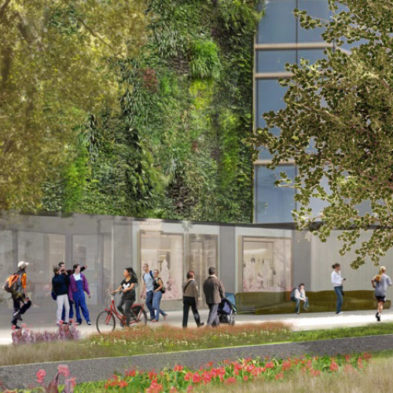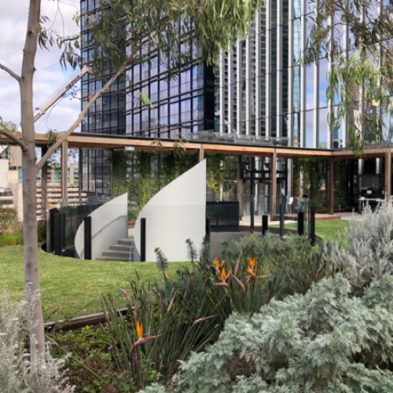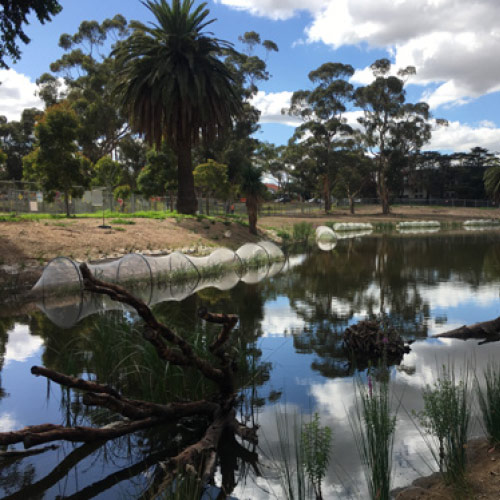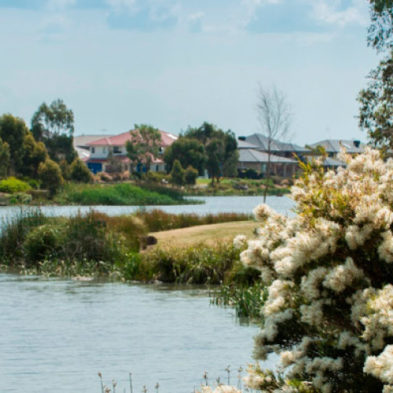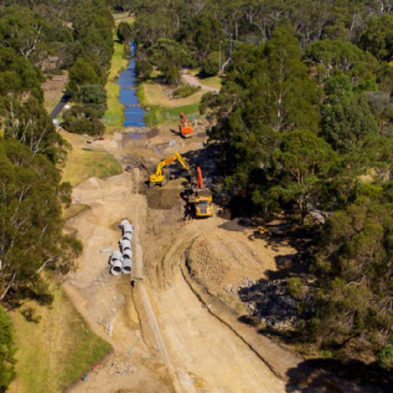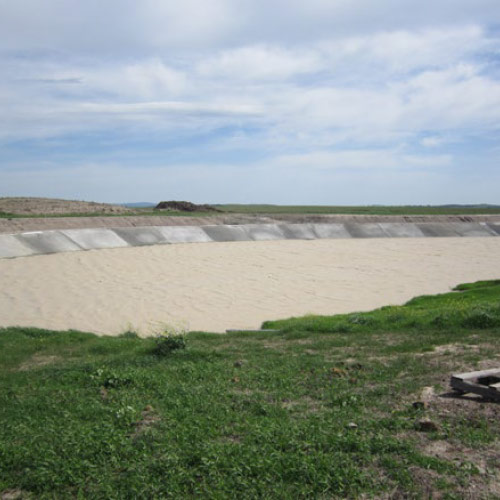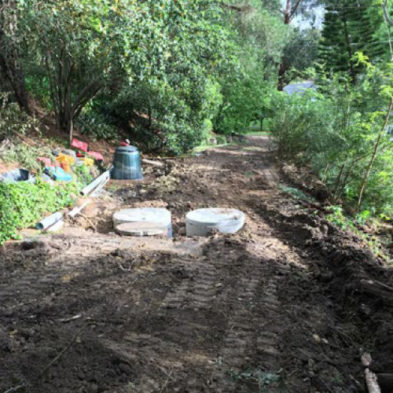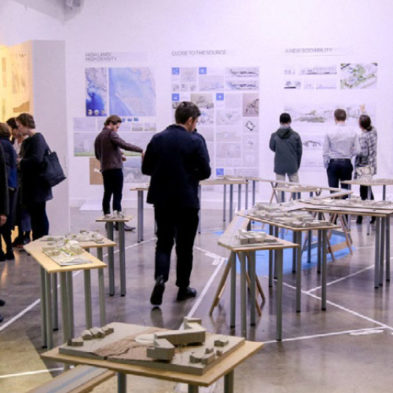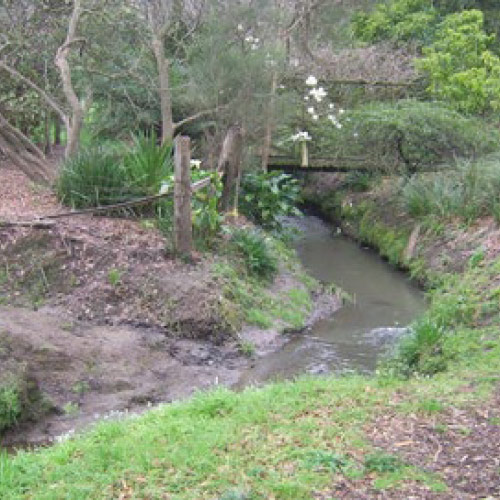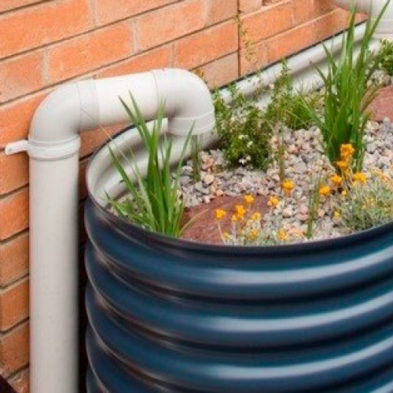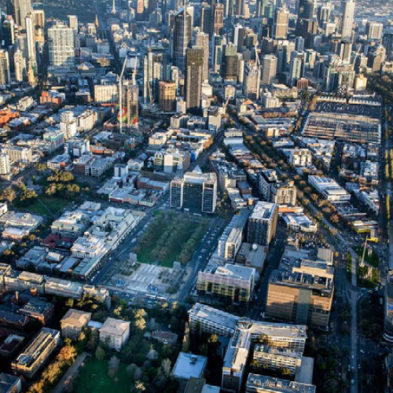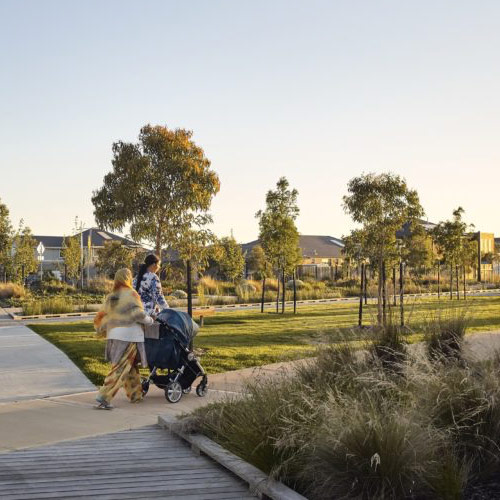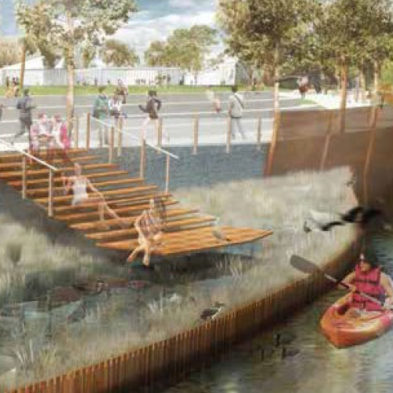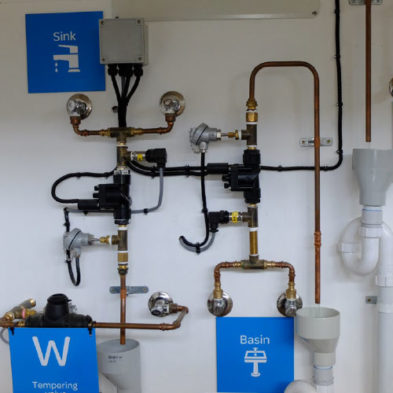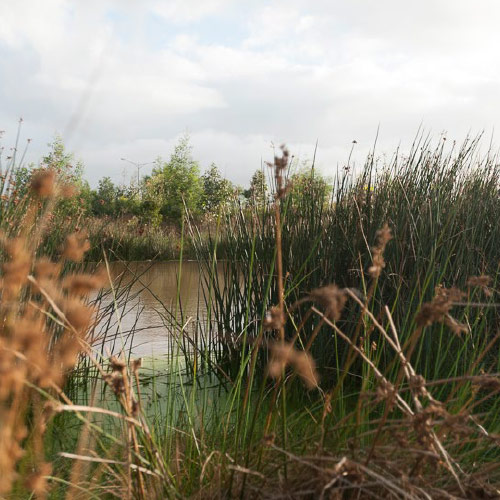Current Water Sensitive Performance
Performance against the goals of a water sensitive city
Greater Melbourne was benchmarked using the Water Sensitive Cities Index in August 2016, at a workshop attended by 32 industry representatives. The results are reported in Water for a future-thriving Melbourne.
The Water Sensitive Cities Index has also been used to benchmark municipalities within Greater Melbourne including Moonee Valley, Port Phillip, Monash, Kingston, Manningham, Knox, Whitehorse, Mornington Peninsula and Whittlesea.
Greater Melbourne achieved its strongest result for the goal of Achieve equity of essential services (4.4/5.0). Areas for improvement included Ensure quality urban space (2.5/5.0), Increase community capital (2.7/5.0) and Improve productivity and resource efficiency (2.7/5.0).
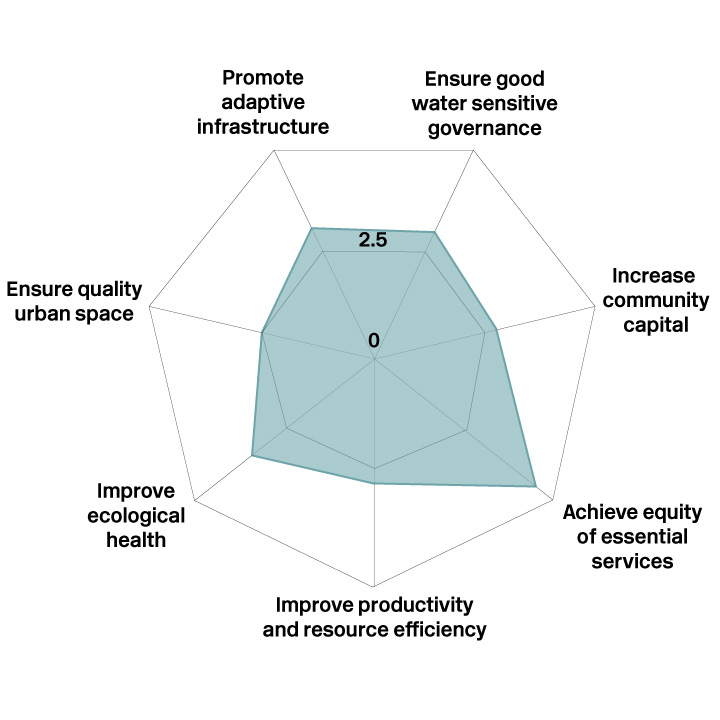
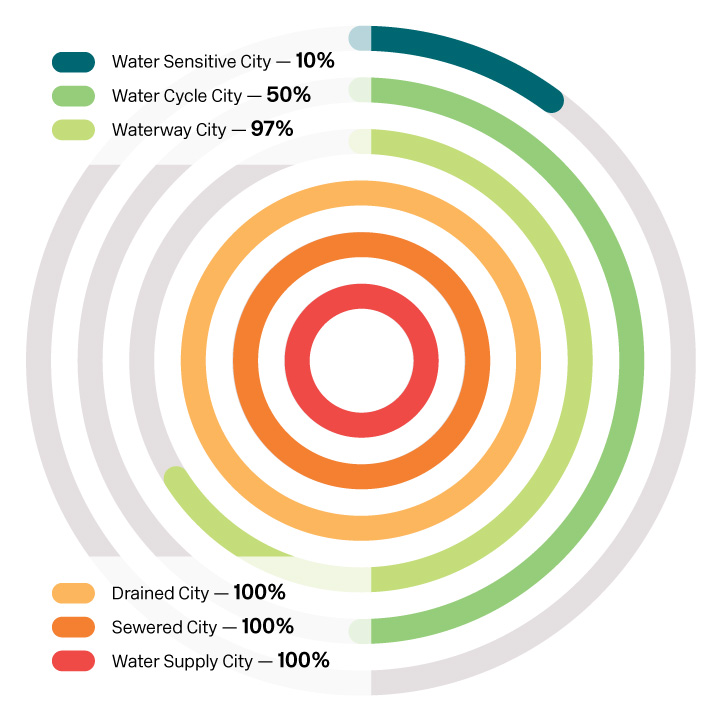
Achieving city–states
Greater Melbourne’s results against the 6 city–states highlights its strong performance is in providing basic services. It has equitable water supply and sanitation services that are safe, secure and affordable (100% Water Supply City and Sewered City). The community is also protected against floods (100% Drained City).
Greater Melbourne also performs well in providing environmental sustainability services (97% Waterways City). The most scope for improvement relates to using water to increase resilience (50% Water Cycle City) and liveability (10% Water Sensitive City).
The city’s Water Cycle City rating could be increased by further collaboration on diverse water supplies. There is potential to better incorporate Indigenous interest and knowledge into water planning.
The Water Sensitive City rating could be improved by increasing tree canopy cover to improve biodiversity and support social values.
Change strategy: how to become more water sensitive
- Towards a Water Sensitive Elwood presents the outcomes of a participatory process that developed a community-driven future vision for Elwood and pathways for advancing that vision.
- The ideas, strategies and solutions developed by the participants were diverse and revealed the interconnections between water, people, infrastructure and the landscape. Ideas for change related to:
- catchment governance
- regulatory frameworks
- community connectedness
- individual resilience and adaptive capacity
- urban planning approaches
- transportation methods
- the form of public and private spaces
- the Elster creek and foreshore environments.
Research relevant to Melbourne
- On very hot days in 2014, the air temperature below the canopy of a single isolated tree in Melbourne was 0.6–1.2°C cooler than immediately upwind of the tree. Comparing the air temperature in two residential streets in East Melbourne during hot daytime conditions, the air temperature in a tree lined street was 0.2–0.9°C cooler than in an equivalent street with little canopy cover. (Determine the microclimatic influence of harvesting solutions and WSUD at micro-scale)
- Residents of established suburbs in Melbourne indicated a preference for streets containing raingardens but a reluctance to be responsible for their maintenance. (Designing raingardens for community acceptance)
- Geomorphic thresholds for waterway bed and bank erosion were associated with standard hydrologic indices using hydraulic models and hydrologic data sets for sites throughout Melbourne. (Flows that cause geomorphic change in urban streams and what stormwater control measures can do)
- Catchment effective imperviousness (a measure of impervious surfaces connected to waterways by the urban stormwater drainage system) was found to better predict changes to stream morphology than total catchment imperviousness. (Ecologically relevant geomorphic attributes of streams are impaired by even low levels of watershed effective imperviousness)
- Analysis of Melbourne’s transition to improved stormwater quality revealed the importance of a small group of loosely connected people from across government, private, community and scientific sectors who steered the transition over decades. (Actors working the institutions in sustainability transitions: the case of Melbourne’s stormwater management)
Urban heat
Estimating the economic benefits of urban heat island mitigation – economic analysis
Estimating the economic benefits of urban heat island mitigation – biophysical aspects
Impacts of WSUD solutions on human thermal comfort
Perceptions of thermal comfort in heatwave and non-heatwave conditions in Melbourne, Australia
Is the urban heat island exacerbated during heatwaves in southern Australian cities?:
Short-term changes in thermal perception associated with heatwave conditions in Melbourne, Australia
Weekly cycles in peak time temperatures and urban heat island intensity
Mapping heat health risks in urban areas
Adapting urban environments to climate change: A case study of Melbourne, Australia
Heat stress during the Black Saturday event in Melbourne, Australia
Assessing practical measures to reduce urban heat: Green and cool roofs
Biofilters
Designing raingardens for community acceptance
Designing living walls for greywater treatment
Long-term phosphorus accumulation in stormwater biofiltration systems at the field scale
The validation of stormwater biofilters for micropollutant removal using in situ challenge tests
Water retention by raingardens: implications for local-scale soil moisture and water fluxes
Surrogates for herbicide removal in stormwater biofilters
Stable copper-zeolite filter media for bacteria removal in stormwater
Removal of E. coli from urban stormwater using antimicrobial-modified filter media
Urban waterways
A catchment-scale experiment on stream restoration through dispersed upland stormwater retention
Flows that cause geomorphic change in urban streams and what stormwater control measures can do
Improving urban stream condition by redirecting sediments: A review of associated contaminants
Saving a creek one bid at a time: A uniform price auction for urban stormwater retention
Wetlands
Modelling
Planning
Victoria’s Planning Framework for Water Sensitive Urban Design
Preparing for disruptions: A diagnostic strategic planning intervention for sustainable development
A methodology to enable exploratory thinking in strategic planning
Flexible adaptation planning process for urban adaptation in Melbourne
Are we there yet? Integrated water sensitive open space planning for climate change adaptation
Connecting land-use and water planning: Prospects for an urban water metabolism approach
The Influence of Statutory Land Use Planning on Water Sensitive Design Practices
Stormwater quality
Microbial quality of untreated stormwater in Australian catchments: human health perspectives
Stormwater pollutant runoff: A stochastic approach
Intra-event variability of Escherichia coli and total suspended solids in urban stormwater runoff
Predicting Between-Event Variability of Escherichia coli in Urban Storm Water
Pesticide occurrence and spatio-temporal variability in urban run-off across Australia
Toxicity characterization of urban stormwater with bioanalytical tools
Water supply
Risks to the long-term viability of residential non-potable water schemes: a review
Hedging supply risks: An optimal urban water portfolio
Water sensitive cities and regions: tackling threats to water resources in metropolitan areas.
Changing household water consumption practices after drought in three Australian cities
It’s what you do and where you do it: Perceived similarity in household water saving behaviours
Stormwater flow regime
The impact of stormwater source-control strategies on the (low) flow regime of urban catchments
Modelling the impact of stormwater source control infiltration techniques on catchment baseflow
Flow-regime management at the urban land-parcel scale: test of feasibility
Restoring natural flow regimes: the importance of multiple scales
Hydrologic shortcomings of conventional urban stormwater management and opportunities for reform
The stormwater retention performance of rainwater tanks at the land parcel scale
Urban stormwater runoff: A new class of environmental flow problem
Setting objectives for hydrologic restoration: from site-scale to catchment-scale
Flooding
Other
Mechanisms for unpacking socio-institutional pathways for change: a research compendium from A4.1
Becoming a water sensitive city: a comparative review of regulation in Australia:
Results of a legislative stocktake for Victoria
Conceptualising urban water regulation: the Melbourne system
Kalkallo: a case study in technological innovation amidst complex regulation
Mediating the science-policy interface: Insights from the urban water sector in Melbourne, Australia
Valuing Environmental Services Provided by Local Stormwater Management
Operationalising resilience to drought: Multi-layered safety for flooding applied to droughts
Advancing the adaptation of the water resource sector in highly urbanised regions across Australia
Diagnosing transformative change in urban water systems: theories and frameworks:
Better regulatory frameworks for water sensitive cities: an Australian case study:
The enabling institutional context for integrated water management: lessons from Melbourne
Evaluation of sustainable electron donors for nitrate removal in different water media
Configuring transformative governance to enhance resilient urban water systems:
Water and the making of Californian and Australian cities: Introduction
- Aquarevo is an urban residential development that is being developed in collaboration between the land owner, South East Water, and a property developer, Villawood Properties. Water innovations at Aquarevo include using rainwater for hotwater, Tank Talk technology that releases water from tanks before heavy rainfall to minimise flooding and an urban forest to reduce peak summer temperatures. (Aquarevo case study, Ideas for Aquarevo)
- Ideas for Fishermans Bend is a water sensitive and low cardon strategy for Fishermans Bend based on four key principles
- include flood resilience, environmental performance and liveability in water security considerations
- consider the ‘water-energy’ nexus
- use water services, or assets, to enhance liveability
- harness urban design as a platform to integrate these ideas.
- Dobsons Creek is one of the highest value waterways in the Dandenong Creek catchment. Melbourne Water and Knox City Council initiated a pilot program to retrofit public and private land within the 1300 hectare catchment with stormwater disconnection measures.( Dobsons Creek stormwater disconnection project)
- Economic non-market valuation approaches were used to understand the benefits associated with improving the Melbourne Outfall Sewer reserve. The analysis showed that improving the reserve will provide a value to the local community of $55 to $100 million. (Assessment of non-market benefits of implementing large-scale WSUD: Greening the pipeline case study, Greening the pipeline – Williams Landing pilot park)
Ideas for Vic. Planning Controls
Collaborative planning for the Fishermans Bend Urban Redevelopment
Green walls, roofs and facades in the City of Melbourne
Victorian Planning Provisions Amendment (V154 – Stormwater management) case study
Enhancing our Dandenong Creek program
Kalkallo stormwater harvesting and reuse
Park Orchards community sewerage trial
Dobsons Creek stormwater disconnection project
Expansion of stormwater quality requirements in the City of Moonee Valley local planning scheme
Elizabeth Street catchment integrated water cycle management plan
Assessment of non-market benefits of implementing large-scale WSUD: Greening the pipeline case study
Public preferences for ‘greening the pipeline’ – preliminary results [Video]
Greening the pipeline – Williams Landing pilot park
Economic value of urban heat island (UHI) mitigation: a case study
Moonee Valley Water Sensitive Cities Benchmarking
Water sensitive cities benchmarking and assessment: Mooney Valley City Council
A new community at Officer case study
Arden Macaulay in Transition: Four adaptive design concepts for drainage and flood management
Arden Macaulay framed through water: Design investigation, Stage 1
- INFFEWS Benefit Cost Analysis Tool: Booklet of applied examples documents how the BCA Tool was applied to case studies by other practitioners. The booklet describes the use of INFFEWS to compare the benefits and costs of the Tarralla Creek naturalisation and wetland creation project in Croydon.
- Valuing the benefits of local stormwater management found that Melbourne and Sydney homeowners highly value projects that improve the health of local waterways and decrease water restrictions, but not necessarily those that reduce flash flooding.
- Trees for a cool city: Guidelines for optimised tree placement explains where to place trees and emphasises the use of urban water management to achieve well-watered trees with healthy, shading canopies. The guidelines refer to research on the cooling benefits of trees in Greater Melbourne.
- Water’s role in liveability is a visual summary of how combining water management with urban planning drives liveability for Victorian communities.
Design of the public realm to enhance thermal comfort
Trees for a cool city: Guidelines for optimised tree placement
Valuing the benefits of local stormwater management
Changing water habits after drought: Why garden watering was easier to change than showering
Water and the Australian city: lessons from history
What is the best mix for our urban water supply?
BCA Tool (INFFEWS) Webinar – insights from industry applications
INFFEWS Benefit Cost Analysis Tool: Booklet of applied examples
Projects to mainstream water sensitive practice
Mainstreaming projects help water sensitive approaches become standard practice, supported by strong
community demand, robust science, technical capability, sufficient funding and supportive governance.
